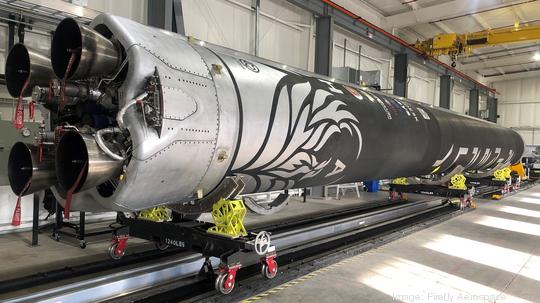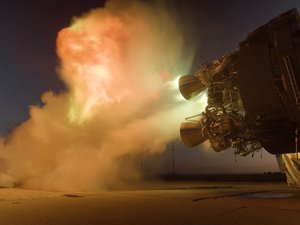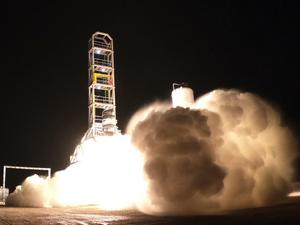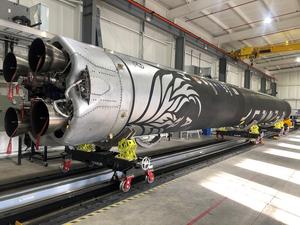
Update: After launching high into the sky above California, Firefly Aerospace's first attempt to send a rocket into lower Earth orbit ended in a big explosion. It blew up shortly after reaching supersonic speed and it appeared to happen before the second stage rocket ignited. An audio feed between rocket operators called it an "anomaly."
"Alpha experienced an anomaly during first stage ascent that resulted in the loss of the vehicle. As we gather more information, additional details will be provided," Firefly said in a tweet. "Prior to entering the countdown, the Range cleared the pad and all surrounding areas to minimize risk to Firefly employees, base staff, and the general public. We are continuing to work with the Range, following all safety protocols."
Firefly expanded on that with a statement early Friday morning, noting that there were no injuries related to the mission.
"While we did not meet all of our mission objectives, we did achieve a number of them: successful first stage ignition, liftoff off the pad, progression to supersonic speed, and we obtained a substantial amount of flight data," the statement said.
Failures are relatively common during initial rocket launches, as Firefly CEO Tom Markusic has noted.
The video player embedded below now shows a replay of the mission prep and launch. The launch occurs shortly after the 1:58:00 mark.
Original story: Firefly Aerospace Inc., a Cedar Park-based company that was once on the brink of failure, is planning to launch its first rocket into lower Earth orbit on the evening of Sept. 2.
The launch is expected to happen between 8 p.m. and 11 p.m. CST at Vandenberg Air Force Base in California, although weather and other factors may cause delays. SpaceX and several other major aerospace companies also conduct launches at the base.
The launch is a huge milestone for the company, and it adds to the growing number of private companies headed to space, an area once dominated almost exclusively by government-funded organizations around the world.
Firefly, which in May raised a $75 million round of funding and saw its valuation climb above $1 billion, has said that it plans to raise up to $300 million in additional capital later this year, following the first orbital flight.
This maiden voyage is a major test for the company's Alpha rocket. And even the company's founder and CEO Tom Markusic has acknowledged that success isn't guaranteed.
"At SpaceX we crashed three of them before we got it right," he said during a speaking engagement last month. "So it'll be an interesting show one way or another, and we're very transparent so hopefully we'll be able to stream all that live, for better or worse."
You can watch the launch live via the Everyday Astronaut YouTube page, which is embedded below.
Firefly listed the contents of its first planned flight into orbit a couple years ago. But now Everyday Astronaut's site shows additional details about the contents of the rocket's payloads, which includes everything from a project created by student robotics enthusiasts at Anderson High in Austin to plant DNA and tiny satellites that measure only 5 centimeters.
Here's a brief look at some of the items the Everyday Astronaut reports are expected to be carried up by Firefly's Alpha rocket:
- A photo of 21-year-old Swedish space enthusiast Liam Fjellstedt and his family and friends
- Messages from pediatric patients from around the globe facilitated by personalized space message company AstroGrams
- A children's book called "Henry the Astronaut," by Jonna Ocampo
- DNA samples from a variety of plants from around the globe as part of LifeShip's effort to bring Earth-based DNA to orbit; it also plans to send human DNA to the moon on a future Firefly mission
- A variety of tiny satellites developed by Libre Space Foundation in Greece to conduct amateur radio communications and other experiments, as well as similar cubesats by FOSSA Systems, AMSAT-EA, Hawaii Science and Technology Museum and Teachers in Space.
- A dragsail developed by Purdue University, the Cal Poly CubeSat Lab and NASA to reduce the amount of time it takes for the second stage of the rocket to descend from orbit.







